Related Research Articles

Jacobus Henricus van 't Hoff Jr. was a Dutch physical chemist. A highly influential theoretical chemist of his time, van 't Hoff was the first winner of the Nobel Prize in Chemistry. His pioneering work helped found the modern theory of chemical affinity, chemical equilibrium, chemical kinetics, and chemical thermodynamics. In his 1874 pamphlet, van 't Hoff formulated the theory of the tetrahedral carbon atom and laid the foundations of stereochemistry. In 1875, he predicted the correct structures of allenes and cumulenes as well as their axial chirality. He is also widely considered one of the founders of physical chemistry as the discipline is known today.

Oceanography, also known as oceanology, sea science, ocean science, and marine science, is the scientific study of the oceans. It is an Earth science, which covers a wide range of topics, including ecosystem dynamics; ocean currents, waves, and geophysical fluid dynamics; plate tectonics and seabed geology; and fluxes of various chemical substances and physical properties within the ocean and across its boundaries. These diverse topics reflect multiple disciplines that oceanographers utilize to glean further knowledge of the world ocean, including astronomy, biology, chemistry, geography, geology, hydrology, meteorology and physics. Paleoceanography studies the history of the oceans in the geologic past. An oceanographer is a person who studies many matters concerned with oceans, including marine geology, physics, chemistry, and biology.

Phytoplankton are the autotrophic (self-feeding) components of the plankton community and a key part of ocean and freshwater ecosystems. The name comes from the Greek words φυτόν, meaning 'plant', and πλαγκτός, meaning 'wanderer' or 'drifter'.

Paul Jozef Crutzen was a Dutch meteorologist and atmospheric chemist. He and Mario Molina and Frank Sherwood Rowland were awarded the Nobel Prize in Chemistry in 1995 for their work on atmospheric chemistry and specifically for his efforts in studying the formation and decomposition of atmospheric ozone. In addition to studying the ozone layer and climate change, he popularized the term Anthropocene to describe a proposed new epoch in the Quaternary period when human actions have a drastic effect on the Earth. He was also amongst the first few scientists to introduce the idea of a nuclear winter to describe the potential climatic effects stemming from large-scale atmospheric pollution including smoke from forest fires, industrial exhausts, and other sources like oil fires.
High-nutrient, low-chlorophyll (HNLC) regions are regions of the ocean where the abundance of phytoplankton is low and fairly constant despite the availability of macronutrients. Phytoplankton rely on a suite of nutrients for cellular function. Macronutrients are generally available in higher quantities in surface ocean waters, and are the typical components of common garden fertilizers. Micronutrients are generally available in lower quantities and include trace metals. Macronutrients are typically available in millimolar concentrations, while micronutrients are generally available in micro- to nanomolar concentrations. In general, nitrogen tends to be a limiting ocean nutrient, but in HNLC regions it is never significantly depleted. Instead, these regions tend to be limited by low concentrations of metabolizable iron. Iron is a critical phytoplankton micronutrient necessary for enzyme catalysis and electron transport.

Iron fertilization is the intentional introduction of iron-containing compounds to iron-poor areas of the ocean surface to stimulate phytoplankton production. This is intended to enhance biological productivity and/or accelerate carbon dioxide sequestration from the atmosphere. Iron is a trace element necessary for photosynthesis in plants. It is highly insoluble in sea water and in a variety of locations is the limiting nutrient for phytoplankton growth. Large algal blooms can be created by supplying iron to iron-deficient ocean waters. These blooms can nourish other organisms.
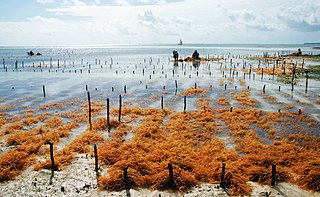
Algaculture is a form of aquaculture involving the farming of species of algae.

Ocean fertilization or ocean nourishment is a type of technology for carbon dioxide removal from the ocean based on the purposeful introduction of plant nutrients to the upper ocean to increase marine food production and to remove carbon dioxide from the atmosphere. Ocean nutrient fertilization, for example iron fertilization, could stimulate photosynthesis in phytoplankton. The phytoplankton would convert the ocean's dissolved carbon dioxide into carbohydrate, some of which would sink into the deeper ocean before oxidizing. More than a dozen open-sea experiments confirmed that adding iron to the ocean increases photosynthesis in phytoplankton by up to 30 times.
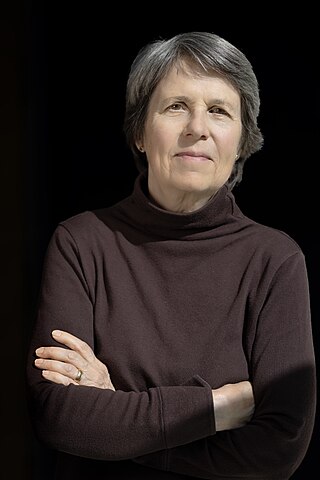
Sallie Watson "Penny" Chisholm is an American biological oceanographer at the Massachusetts Institute of Technology. She is an expert in the ecology and evolution of ocean microbes. Her research focuses particularly on the most abundant marine phytoplankton, Prochlorococcus, that she discovered in the 1980s with Rob Olson and other collaborators. She has a TED talk about their discovery and importance called "The tiny creature that secretly powers the planet".

Algae fuel, algal biofuel, or algal oil is an alternative to liquid fossil fuels that uses algae as its source of energy-rich oils. Also, algae fuels are an alternative to commonly known biofuel sources, such as corn and sugarcane. When made from seaweed (macroalgae) it can be known as seaweed fuel or seaweed oil.
Christopher Michael Reddy is a Senior Scientist at the Woods Hole Oceanographic Institution (WHOI) in the Department of Marine Chemistry and Geochemistry.

The oceanic carbon cycle is composed of processes that exchange carbon between various pools within the ocean as well as between the atmosphere, Earth interior, and the seafloor. The carbon cycle is a result of many interacting forces across multiple time and space scales that circulates carbon around the planet, ensuring that carbon is available globally. The Oceanic carbon cycle is a central process to the global carbon cycle and contains both inorganic carbon and organic carbon. Part of the marine carbon cycle transforms carbon between non-living and living matter.

RV Pelagia is a research vessel in the service of the Royal Netherlands Institute of Sea Research (NIOZ), a research institute of the Dutch Research Council (NWO). It was built in 1991 by Verolme Shipyard in Heusden, The Netherlands, and has been in NIOZ-service since. The RV Pelagia is due to be replaced but on 14 April 2022 a Dutch court ruled that the original contract must be amended, resulting in a delay of the final tender for the replacement that will bear the name RV Anna Weber-van Bosse, after the Netherlands' first female marine biologist to conduct research at sea.
Dr. Syed Wajih Ahmad Naqvi is an Indian marine scientist and the former director of the National Institute of Oceanography. His work has concentrated in oceanic water chemistry, biogeochemistry, and chemical interrelations with living organisms. He has also performed research on freshwater ecosystems. He was the chief Indian scientist of LOHAFEX, an ocean iron fertilization experiment jointly planned by the Council of Scientific Industrial Research (CSIR), India, and Helmholtz Foundation, Germany.

Frederick T. Mackenzie was an American sedimentary and global biogeochemist. Mackenzie applied experimental and field data coupled to a sound theoretical framework to the solution of geological, geochemical, and oceanographic problems at various time and space scales.

Bernard Lucas Feringa is a Dutch synthetic organic chemist, specializing in molecular nanotechnology and homogeneous catalysis. He is the Jacobus van 't Hoff Distinguished Professor of Molecular Sciences, at the Stratingh Institute for Chemistry, University of Groningen, Netherlands, and an Academy Professor of the Royal Netherlands Academy of Arts and Sciences. He was awarded the 2016 Nobel Prize in Chemistry, together with Sir J. Fraser Stoddart and Jean-Pierre Sauvage, "for the design and synthesis of molecular machines".
The Royal Netherlands Institute for Sea Research, also known as NIOZ, in Dutch the Nederlands Instituut voor Onderzoek der Zee, is the Dutch national oceanographic institute. It is located on the island of Texel, and in Yerseke, in the Netherlands. The institute was founded in 1876 as the Zoological Station and in 1960 it was renamed to its current name. NIOZ carries out marine research in the waters of the Netherlands and overseas; it also plays a role in educating students, and it offers research facilities to marine scientists from the Netherlands and other countries worldwide. NIOZ has a longstanding collaboration with Utrecht University, for instance in an interdisciplinary Master’s programme Marine Sciences. NIOZ is part of the institutes organization of the Dutch Research Council (NWO).
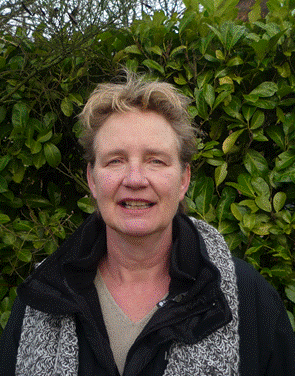
Anita Gerry Johanna Buma is a Dutch Antarctic researcher, best known for her work on ecophysiology of marine microalgae. She was the first Dutch female researcher in Antarctica.
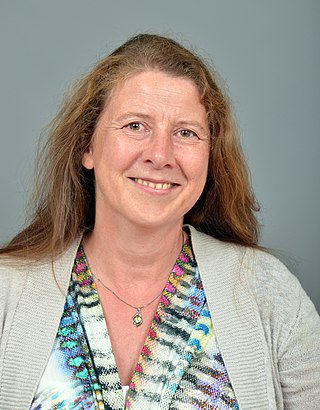
Corina P. D. Brussaard is a leading scientist for Antarctic viral ecology working for the Royal Institute of Sea Research (NIOZ) and is a Special Professor of Viral Ecology at the Institute for Biodiversity and Ecosystem Dynamics of the University of Amsterdam (UvA).
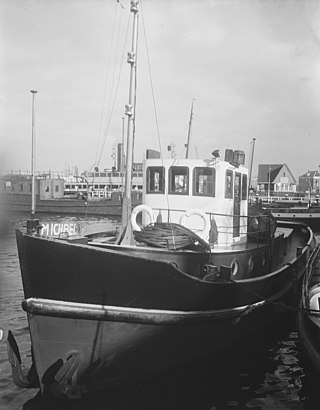
HNLMS Orkaan (A837) was a tugboat of the Royal Netherlands Navy (RNN). She served in the RNN between 1949 and 1961. It was at the time the largest tugboat to be built in the Netherlands for the RNN.
References
- ↑ Henricus J.W. (Hein) de Baar, 1949, Catalogus Professorum Academiae Groninganae at University of Groningen website
- ↑ Robert Lagendijk (10 November 2011). "Coördinator Hein de Baar: We kunnen doorgaan omdat we onszelf hebben bewezen" (in Dutch). pooljaar.nl. Archived from the original on 17 November 2015. Retrieved 15 November 2015.
- 1 2 "Hein de Baar". Royal Netherlands Academy of Arts and Sciences . Retrieved 15 November 2015.
- ↑ "PhD thesis" (PDF). MIT. September 1983. Retrieved 11 January 2022.
- ↑ "Raad van toezicht" (in Dutch). Netherlands Maritime Campus. Retrieved 15 November 2015.
- 1 2 "A tribute to the work stimulated by Hein de Baar". Marine Chemistry. 10 January 2016. Retrieved 11 January 2022.
- ↑ "Prof. Hein de Baar: Algae produce the ideal biofuel'". University of Groningen. 15 January 2008. Retrieved 15 November 2015.
- ↑ Maarten Keulemans (15 November 2013). "CO2-uitstoot doet oceanen in hoog tempo verzuren" (in Dutch). de Volkskrant . Retrieved 15 November 2015.
- ↑ Quirin Schiermeijer (28 January 2009). "Ocean fertilization: dead in the water?". Nature . 457 (7229): 521. doi:10.1038/457520b. PMID 19177092 . Retrieved 11 January 2022.